ATHENS (Day 7 - part 1)
We began the day with a visit to the Olympieion or The Temple of Olympian Zeus. It was located in a lovely-smelling field of camomile, and twittering swallows zipped around the massive columns.
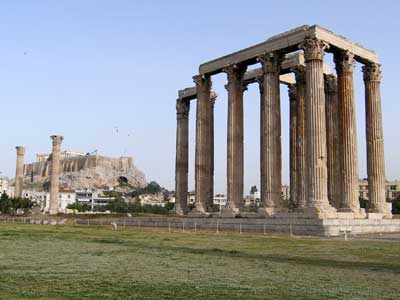
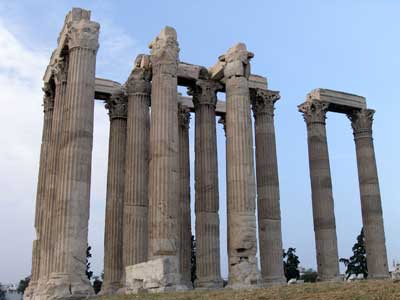
Only 15 of the original 104 columns remain.
Construction began in 174 BC but wasn't completed until the year 131 ... 638 years later. At the time, it was the largest temple in Greece. Unfortunately it was destroyed in a barbarian invasion the following century. It was never repaired and fell into ruins thereafter. Much of it was used to built other temples in the city.
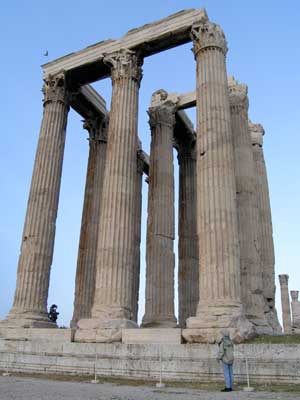
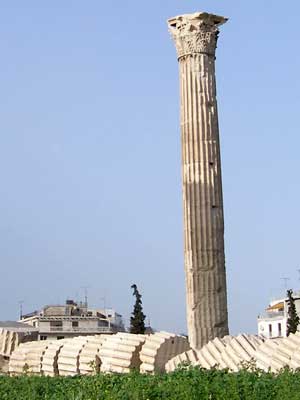
The columns are 56 feet tall. ...The column in the foreground collapsed in 1852.
Nearby was Hadrian's Arch and some old houses and Roman baths.
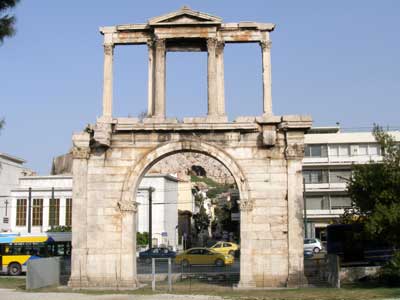
Hadrian's Arch was built in 131 by the Roman Emperor Hadrian as part of a wall separating the old city of Athens from the new. It straddled one of the ancient roads leading from the city's center.
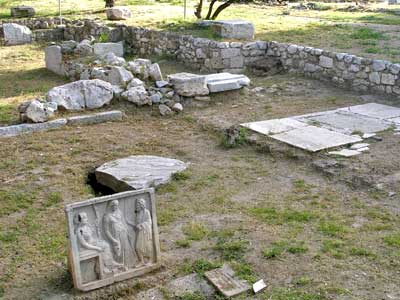
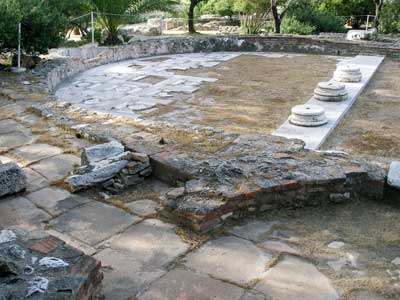
The remains of houses from the 5th century BC through the 2nd century AD... and Roman baths dating from 124 - 134 AD
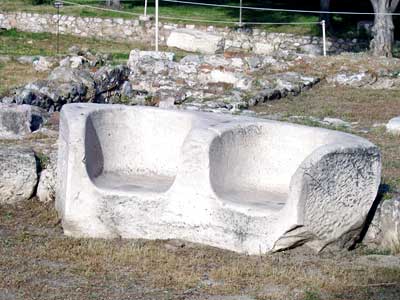
In the neighboring Plaka district was the Agia Aikaterini (or Ekaterini) Church, dedicated to St. Catherine.
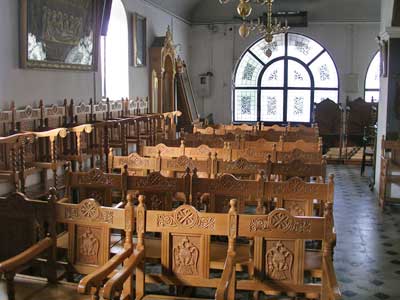
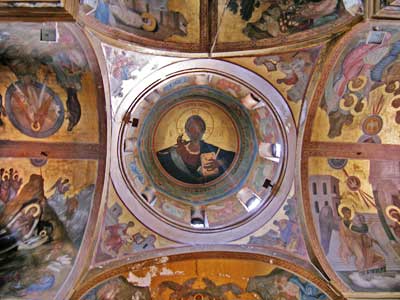
Built in the middle of the 11th century, the Byzantine church rests on top of an old temple of the goddess Artemis as well as the Church of St. Theodore from the 5th century, to whom it was dedicated until 1767, in honor of Emperor Theodosius II.
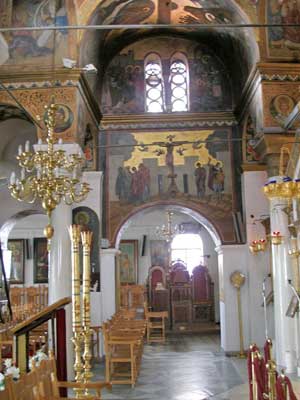



The holy relics of St. Polydoros of Cyprus, St. Athanasios of Persia and St. Triphon were brought here in 1922 by a priest from Ephesos (an ancient Greek city now located within the borders of Turkey).
We found ourselves at the edge of the Ancient Agora. The word agora simply means 'marketplace' or 'public square'. This location was the center of the ancient city. It was available for public events as well as administrative, political and religious activities.
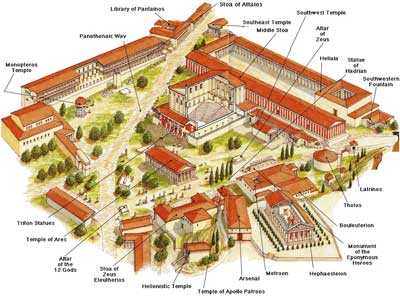
What it used to look like (click for a larger view)
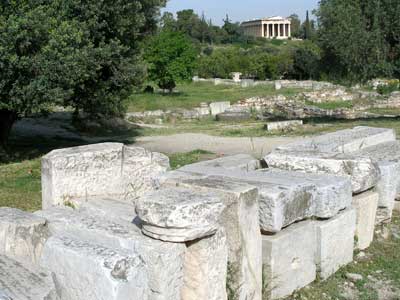
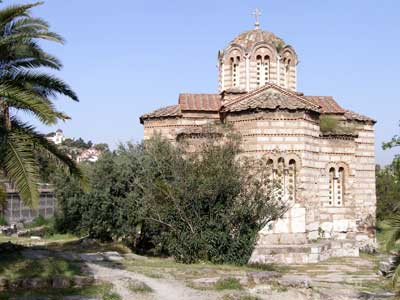
Ruins with the Hephaisteion in the background... and the Church of the Holy Apostles (Holy Apostles of Solaki). The Byzantine church and the Temple of Hephaestus are the only two buildings to survive intact. The church was built around the late 10th century and restored in the 1950's.
The Stoa of Atallos was built in 159 - 138 BC by Attalos II, King of Pergamon. It was completely destroyed in 267 but rebuilt in 1953. Originally used as a place of business, it now houses a museum.

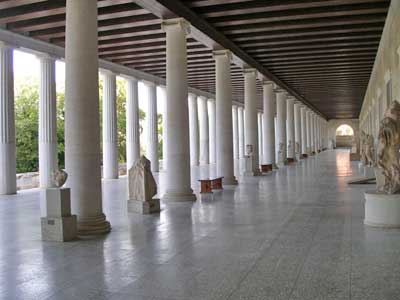
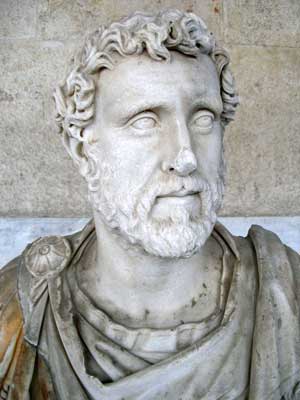
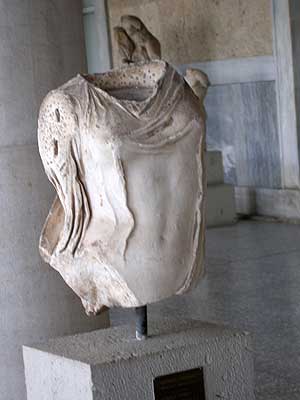
(left) A bust of Antoninus Pius, Roman emperor from 138 to 161
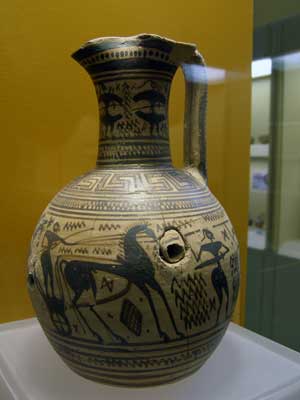
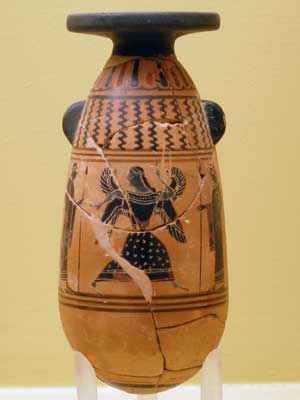
The museum displayed objects that were found during excavation.
We wandered along the old Panathenaic Way, which made its way through the Agora toward the Acropolis.

A dog rests in some shade in the middle of the path, with the Acropolis in the background.
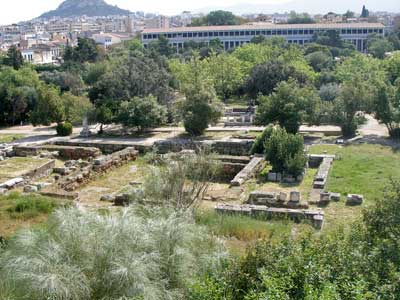
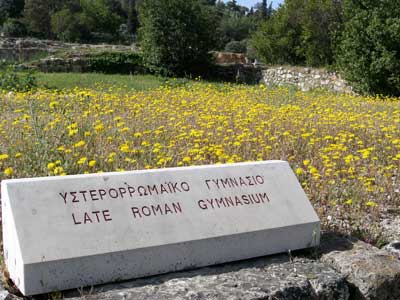
This was the Odeon of Agrippa (a large concert hall that seated 1,000 people)... and the Roman Gymnasium (a training facility for competitors in public games)
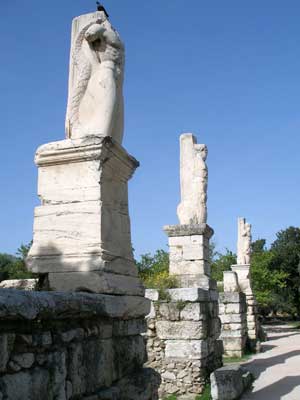
Three of the four Triton statues still adorn the old entrance of the Odeon. Triton was the son of Poseidon, god of the sea.
We reached the other end of the Agora, marked by the Hephaisteion.
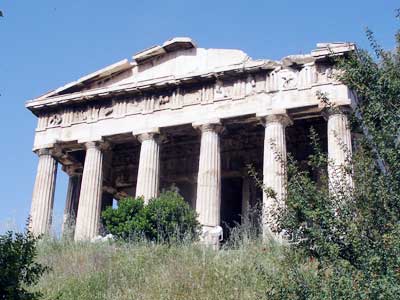
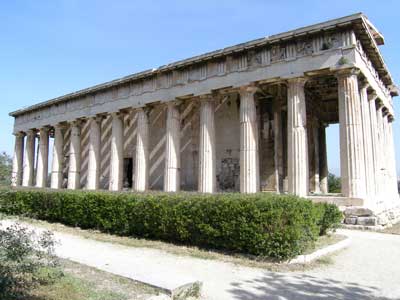
The Hephaisteion (Temple of Hephaestus) was built in the 5th century BC in honor of Athena and Hephaestus (patron god of metal working, craftsmanship and fire).
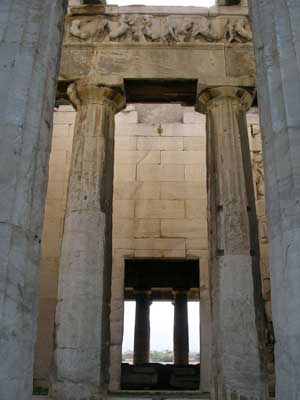
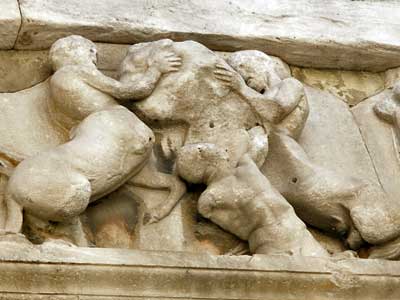
Along the top were friezes depicting the Labors of Heracles (Hercules) and the Labors of Theseus, the legendary king of Athens.... The battle between the Centaurs and the Lapiths
Located next to the Ancient Agora and on our way to the Roman Agora was a complex containing Hadrian's Library and the Tetraconch Church. The area was meant to provide people with a public square and cultural center, including a garden, works of art, reading rooms and lecture halls.
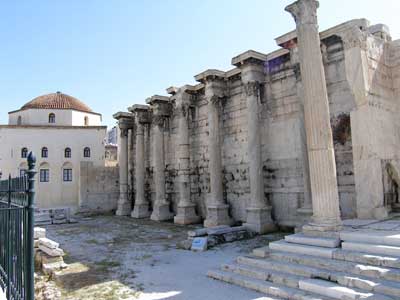
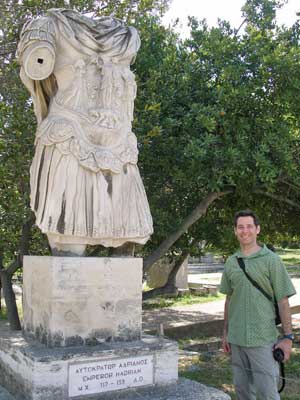
Hadrian's Library was built by Roman Emperor Hadrian in 131.
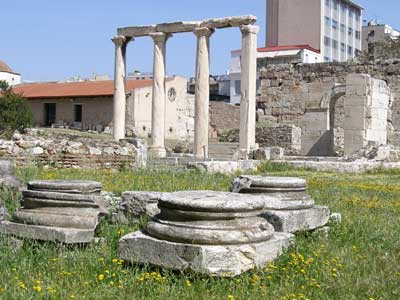
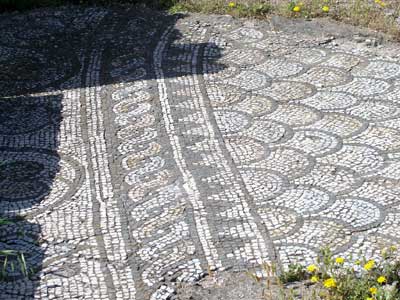
Built sometime in the early 400's, the Tetraconch (meaning "four shells") is believed to be the oldest Christian church in Athens. Destroyed in 582 during a Slav invasion, it was replaced by a large basilica in the 7th century. That was then replaced in the 12th century by a smaller church known as Megali Panagia (Great Virgin Mary). In 1885, it was hit by a fire that also burned the Roman Agora. It was unfortunately demolished during excavation.
We then entered the Roman Agora. By 146 BC, Romans had conquered Greece and life in old Athens changed. To rule out any chance of resistance, the Romans destroyed their literature, monuments and sculptures. The Ancient Agora was no longer the political, economical and cultural center. All that was transferred here, to this new agora. Both Julius Caesar and Augustus provided funds for its construction between 19 to 11 BC.
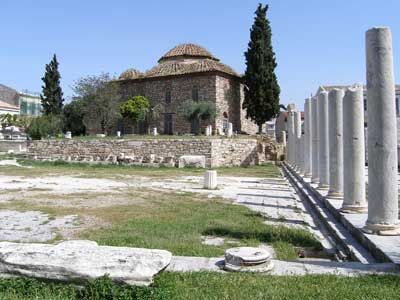
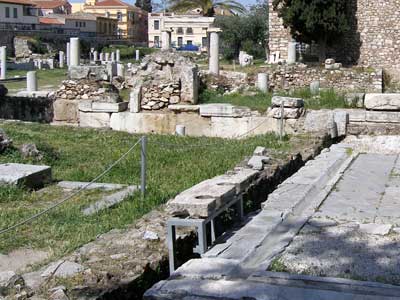
The Roman Agora with the Fethiye Mosque in the background.... The public latrines (vespasianae) with seats hanging over a deep channel
The Fethiye Mosque (meaning Mosque of the Conquest) was built on the ruins of a Christian basilica in 1456, soon after the Ottoman occupation.
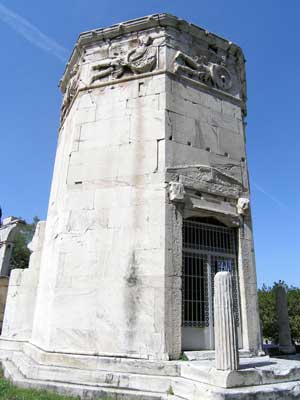
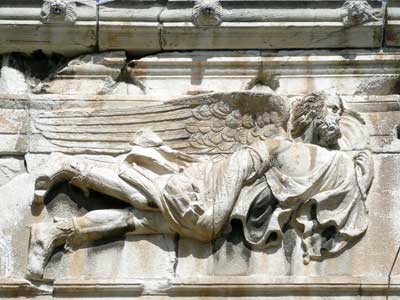
The Tower of the Winds (or Aerides) was an octagonal clocktower. It had sundials, a water clock and a wind vane.
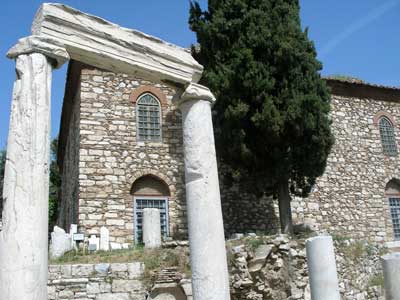

Remains of a public building known as the Agoranomeion, established in 1st century AD (right).
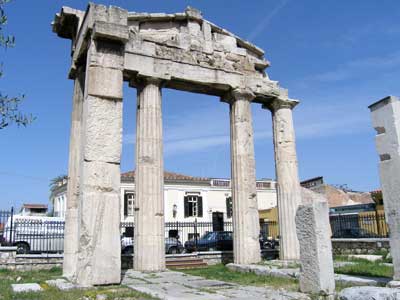
The Gate of Athena Archegetis served as a main way into the agora.
We took a break and grabbed some lunch nearby.

Constantine, Emperor of Byzantium (1449 - 1453)

Green peppers stuffed with rice, with sides of okra, zucchini and potatoes
return • continue